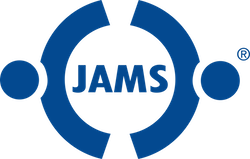“If it bends it’s funny; if it breaks, it isn’t.”
Woody Allen, from Crimes and Misdemeanors
 Flexibility is one of the most important attributes we need to develop in life. As Woody Allen reminds us, it is what separates comedy from tragedy; it’s what allows us to continue moving forward, without breaking, through the adversities we face in every day life.
Flexibility is one of the most important attributes we need to develop in life. As Woody Allen reminds us, it is what separates comedy from tragedy; it’s what allows us to continue moving forward, without breaking, through the adversities we face in every day life.
Flexibility is also one of the key attributes of mediation. It is an integral part of what makes mediation a powerful alternative to traditional litigation. In the mediator’s toolkit, there is nothing more essential than the ability to approach each dispute without preconceptions about the best path forward for resolving the conflict.
To illustrate the paramount importance of flexibility in mediation, I want to share with you my recent experience when I was asked to mediate a case between a university, the city and county in which it was located, and concerned groups of citizens. The parties were embroiled in controversy involving the university’s multi-year expansion plan and its potential effects on resources such as water, housing and traffic.
My first step was to meet separately with each party before I convened a joint session with all stakeholders. This is an initial step I frequently find to be useful in multi-party disputes. It allows me to meet and discuss privately with each constituency their respective views on the history of their dealings together, including their inability to come to an agreement among themselves, to identify the impediments to settlement, including views and misconceptions they hold about other parties, to learn what are important elements of a successful negotiation, and to hear their personal ideas on workable settlement structure and content – their wish lists.
In this particular case it soon became apparent that the inability to reach agreement prior to the mediation was due in large part to their inability to communicate clearly and comfortably with one another. Past dealings and strongly held personal viewpoints had interfered with the exchange of proposals, the parties’ respective views on the proposals and parties’ making them, and their ability to respond in ways that propelled negotiations forward, toward settlement.
I decided that establishing a framework for settlement called for separating the present negotiation from past efforts. We accomplished this by starting off with a session aimed at dispelling misconceptions which I had observed, beginning to build trust in the process, and even though it was early in the process, starting to map out the zone of potential agreement. The parties found this to be a hopeful start.
At the end of the first joint session, I asked each constituency to answer the following questions regarding their authority and commitment to settlement:
•“Are you prepared to use your professional, political and personal capital to support and advocate for a resolution you feel is best for the community and the university (and better than the alternative of no agreement and further litigation)?”
•“If so, are you willing to dedicate the time and effort needed for intensive negotiations?” and
•“Are you willing to entertain a durable, cooperative partnership — in the form of a binding commitment — to resolve the current set of problems (and agree on a process to resolve future disputes)?”
All parties agreed. Bringing the parties to an initial agreement, even if it’s limited in scope to matters of process and procedure, often serves a vital purpose in establishing a constructive tone.
Thereafter, we continued to build trust and buy-in in the process, even as negotiations moved on to more contentious matters. After reviewing perceived reasons for past negotiation failures and ways to address them, we collectively agreed to a schedule or plan for future negotiations, which included the order of substantive issues for discussion (i.e., housing, traffic and water), and identifying who from each party should attend each session. This resulted in an efficient use of people-power because different staff members were knowledgeable and best positioned to address different topics. Only those who could add value to negotiations in their area of expertise were invited to participate in the relevant sessions, while others were not. Tailoring the process to coincide with the availability and expertise and of the parties and the issues in dispute goes a long way to achieving buy-in.
As the independent meetings progressed on the three main areas in dispute, the parties exchanged proposals, written offers and counter-offers, until gradually a comprehensive agreement emerged. In one of the last sessions, a settlement was agreed to among the mayor, senator and university chancellor, and their respective staffs, and leaders of the community.
The first day began with distrust and pessimism, the last ended in a long-term agreement and trust. A comprehensive settlement is the common goal in every mediation but the path to reach it ends up being different in each case. In this instance, the keys to success were (i) the initial decision to coordinate meeting content with the participants utilizing smaller group meetings where details could be hammered out, (ii) making sure that the citizen groups had an equal seat at the table, (iii) agreement among the parties to keep the negotiations confidential if and until an agreement was reached, and (iv) breaking the prior history of futile negotiations by achieving an upfront commitment and buy-in from all disputants to a common task.
In general, to understand how mediation provides a real alternative route to litigation you must appreciate the unique role of the mediator in helping the parties establish a path to settlement. A mediator is a neutral party, not aligned with any party to the dispute. While a judge sits at a remove and maintains formal distance from all of the parties, both inside and outside the courtroom, and is primarily charged with responsibility to make sure the case proceeds in accordance with the applicable rules of civil procedure, a good mediator will roll up his or her sleeves and become actively involved in organizing and guiding the settlement negotiations. In doing so the mediator uses legal, analytical and conciliation skills to guide the parties in reaching the best possible resolution based on the circumstances of each case, usually starting out by identifying the steps that will prove most effective in getting there.
Depending on the number of parties and the complexity of the underlying issues, there is a fair amount of art in this threshold task. The mediator is charged with establishing a reliable, coordinated and organized process, involving such steps as pre-meeting planning, establishing agendas, ensuring the presence of necessary attendees, facilitating the exchange of technical data, identifying key documents and other information needed to make informed settlement decisions, and sequencing the issues to be considered in multiple meetings, including separate insurance and consultant briefings if necessary.
The flexibility inherent in the mediation process is a critical element in establishing the most efficient path to reach settlement in each individual case. Unlike court rules of procedure, the focus and first priority of mediation is an agreement ending the conflict among all disputants. To paraphrase Woody Allen, if it bends, it’s mediation; if it breaks – well it’s going to be a long and arduous journey through trial in court.






Leave a Reply